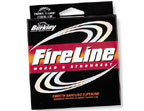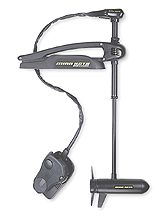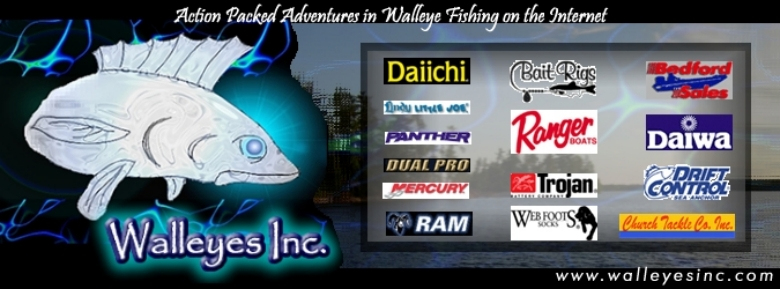|
A walleye angler's wheel of fortune can spin
out of control in July. The "easy" bites of May and June,
when good numbers of aggressive and hungry fish could be found
in predictable locations, are gone. Walleyes, especially on
lakes and reservoirs, become more difficult to pattern and
harder to catch consistently. We've all experienced the "here
today, gone tomorrow" nature of summer 'eyes. Today's weed
bite is tomorrow's wind-blown shoreline bite. This week's
bite for suspended open-water fish is next week's mud bite.
Fish that cooperated all day long in May suddenly seem to
eat only during the low-light hours at dawn and dusk or during
the cover of darkness in between. It's a good time of year
to visit a major river system where walleyes can consistently
be found wedged in the nooks and crannies of rocky wingdams.
One of the best ways to tempt these fish is with willow cats,
a small, spiny member of the catfish family that walleyes
can't seem to resist. In fact, walleyes, wingdams and willow
cats go together like Pat and Vanna of television game show
frame. A good share of the major walleye tournaments taking
place on river systems these days are being won by anglers
dunking willow cats on wingdams, and it's not limited to mid-summer.
As more anglers learn the art of willow-catting, they are
turning it into a presentation that can be used almost year-round.
Still, there's no better time than July, August and September.
Learn to read and probe these rocky current deflectors and
how to effectively present a willow cat, and you'll be onto
a presentation that produces good numbers of walleyes and
plenty of trophies. You won't need a lot of fancy equipment
to fish willow cats. You will need two good anchors with enough
bite to hold a boat in a variety of currents. I've found that
claw-style anchors do a good job of digging in and holding
my Triton 215X. The reason for two is to allow you to position
your boat parallel to the dam once you've decided to set up
on a particular area. You can cover a wider area of water
when you are able to fish from both the bow and stern. You'll
need a fairly long, soft-tipped rod for dead-sticking, a slightly
stiffer rod for casting and retrieving and a pair of high-quality
graphite 7-footers for rigging.
 |
Because of the sharp rocks and the growing presence
of zebra mussels in our river systems, I use 14-pound
Berkley Fireline for my snells and backing, but add a
piece of 6- or 8-pound monofilament when I'm rigging so
I don't lose everything if I get snagged up. Basic terminal
tackle consists of Lindy No-Snagg slip sinkers, No. 2
bait hooks and barrel swivels. There are several ways
to fish willow cats, and they all have their merits. One
of the first decisions you will have to make is which
wingdams to fish. |
That will depend a grat deal on the river stage
and the current velocity. If you are dealing with high water
and extremely swift current, it can be nearly impossible to
maintain boat control or hold with anchors. However, there
are usually other dams with less current that can be fished.
When you are working wingdams, be aware of patterns. Sometimes,
dams just outside feeder creeks or tributaries are holding
the majority of the walleyes. Sometimes, they seem to prefer
rockpiles located on inside or outside corners. Sometimes,
the depth of a dam will attract fish. In general, I like at
least three or four feet of water flowing over the top of
the dam, at least 8 to 10 feet of depth along the face and
a flat top rather than a sharply peaked dam. Look for irregularities,
as well. Occasionally, a boat or a barge rearranges the structure
of a dam, flattening out a spot on top or creating an indentation
that walleyes will relate to. Avoid dams that have been covered
by silt. Seldom have I contacted walleyes unless I can feel
good rock in the area. Once I've identified the dams that
I can and want to fish,
|

Minnkota
101
|
I use my MinnKota bow mount trolling motor and Lowrance
electronics to crawl along the face with a slip-sinker
rig that features a 2- to 3-foot snell leading to a barrel
swivel. I use a bait hook through the bottom lip of a
3- to 4-inch willow cat. The slip sinker is then attached
to the main line above the barrel swivel. When you feel
the hit, simply free spool it and the fish can take that
willow cat and run with it. Count to 10, reel down until
you feel the sinker and set the hook. You won't hook every
fish that bites, but you will get your share of them.
One trick to proving these rocky dam faces is finding
the right weight for your slip sinker. If you are set
up right, you should be keeping your rigs out of trouble
and slowly move them over the top of the rocks. It's been
my experience that where there is one wingdam walleye,
there are usually a lot more. That's why I start with
a slow-trolling presentation. |
 |
Walleyes usually locate along certain sections of a
dam. In high water, it may be close to shore where there
isn't as much current. During normal flow conditions,
I've often found them along the outer third. And in low-water
situations, the best spot tends to be the top of the dam.
When you are able to make that determination, you can
really work them over by anchoring with the same slip-sinker
rigs. I like to set up a soft-tipped rod in a rod-holder
and try to keep it out of trouble at the front edge of
the rocks. With another rod, I'll cast out of "walk" the
rig along the face as the current carries it by slowly
lifting and lowering my rod tip. For a change of pace,
sometimes I'll set aside the bait rod and spend a few
minutes casting jibs or crankbaits across the top of the
dam in search of aggressive, active fish. There seems
to be plenty of debate among walleye anglers regarding
why willow cats work so well for walleyes. Some claim
walleyes hate them and are trying to kill them more than
eat them. |
Some claim that cats make up a significant portion
of a walleye's diet. Whatever. There is no debating the fact
that the distinct slime, scent and spunkiness of a willow
cat attracts walleyes. Next time you're wondering where to
find a good summer walleye bite, just say "Give me a 'W'".
Wingdams, willow cats and walleyes are a letter-perfect solution.
|

